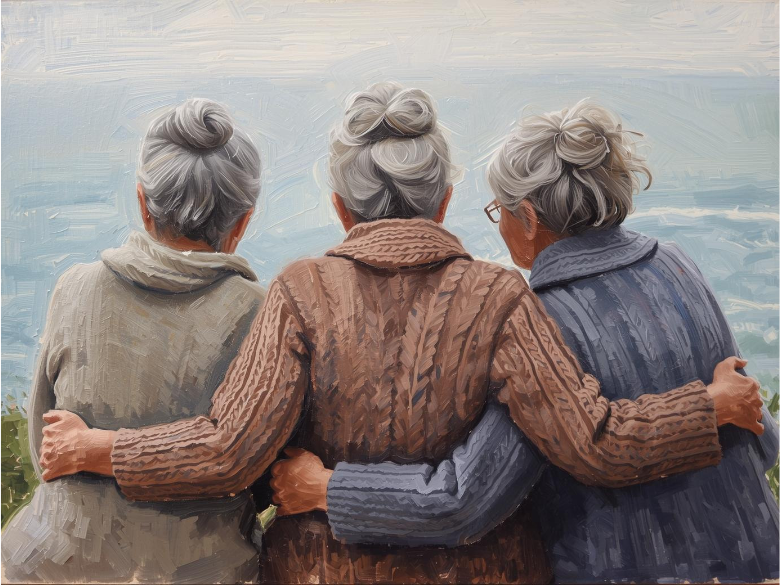
What is true beauty? Society creates the unrealistic standard that we must remain eternally young, and in some cases, these pursuits result in costly cosmetic treatments and, at times, unnatural appearances. This reveals how unrealistic beauty standards shape our actions and perspectives. All of this effort is aimed at avoiding the universal experience of growing old. Is aging truly negative, or does it hold its own form of beauty?
As I’ve grown older, I’ve come to see beauty and aging differently—thanks to remarkable people I’ve met and, most importantly, guidance from the Torah. I would like to share a personal story that has reshaped my perspective and explain what the Torah teaches about true beauty.
The Professor Who Defied Modern-Day Beauty Standards
In college, a classmate and I were struck by the beauty of a professor in her late 70s. She carried herself with wisdom and grace. Her strong features and style were striking. Her wrinkles and gray hair only added to her presence, and her wisdom shone through in her teaching.
Looking back, this was the watershed moment when my thoughts about beauty and aging started to evolve. That experience began to change my definition of what it means to be beautiful. To me, my professor was one of the most gorgeous women on campus, and it was the intricate dance between her inner and outer beauty that made her so striking.
Jewish Wisdom on Beauty and Aging
Many women in the Torah, including Sarah, are described as beautiful. According to Chabad.org, Sarah remained beautiful into old age, reflecting her inner goodness with soul and body in harmony: “The apparent implication is that Sarah was beautiful inside and out—and what’s more, that the inside and outside were interdependent. Her face was a transparent canvas from which emanated her inner radiance.”
In Rachel Holzkenner’s article titled “The Beauty of Sarah,” she references the Chasidic philosophy of “the three ways the soul and body interact.” In the first example, the body is in control, focused on what is desirable. The soul takes a back seat and works to “negotiate” with the body, encouraging “moderation.”
In the second scenario, the soul rejects materialism. In the third, body and soul are in sync. Holzkenner says, “The soul neither leans towards the body nor rejects it. It does not react; it pro-acts. In a proactive position, the soul directs and channels the body’s inclination in a constructive way.”
In this third case, material things are used to glorify G-d. The home is a mini temple, and its beauty honors Hashem. Dressing in beautiful clothes and jewelry reflects a kind and generous soul. Holzkenner notes Sarah “mastered this art.” This connection between soul and body creates true, lasting beauty. For me, it explains my college professor’s appeal and the radiance of others who defy conventional beauty standards.
Our worth is not measured by society’s ideals—the outward glow we notice is really rooted in inner goodness.
We are all beautiful in our own unique way. If there’s one thought I hope you carry with you, it’s this: Let go of the pressure to look eternally young and embrace the beauty found in every season of life. When we reflect G-d’s love through our actions and our presence, we embody a beauty that withstands time and inspires those around us.
Thank you so much for your readership. Shanah Tovah u’Metukah. Shalom, friends!
I would love to hear from you! Feel free to reach out on social media!











